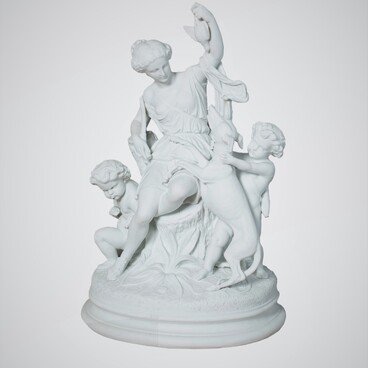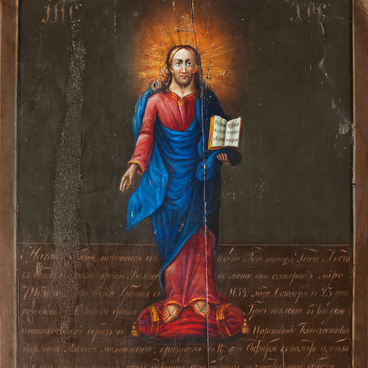The image of the Mandylion is considered one of the most famous and revered in the Orthodox Church. The Image of the Savior on the ubrus (on the cloth), the Savior Not Made by Hands, the Mandylion — these names refer to the first ever icon of the Savior, representing Christ’s face on a cloth or a towel (ubrus) or on a tile.
The iconographic composition of the Savior Not Made by Hands is based on an ancient apocryphal legend (a non-canonical text). According to it, Abgar, the ruler of ancient Edessa (presently, it is an area on the border of Syria and Turkey), fell ill with leprosy. Realizing that only a miracle could save him, he sent his servant Ananias to deliver a letter to Jesus Christ asking to heal him. Ananias was a skilled artist, so the ruler commissioned him to paint a portrait of the Savior and bring it to Edessa if Christ himself did not wish to come. Once in the crowd that surrounded Jesus, Ananias for some reason could not to draw Christ. Being aware of the artist’s intentions, Christ washed his face with water and wiped it with a cloth, on which his image appeared.
Ananias brought the cloth home. Abgar touched it and was immediately healed. The ruler was baptized along with many residents of Edessa, and ordered the cloth with the face of the Savior to be placed in a niche above the city gate. This image was called ‘the Mandylion’.
According to the legend, after Byzantium captured Edessa, the image of Christ appeared on the tile — the bricks that hid the niche with the Savior Not Made by Hands. In 944, the Mandylion appeared in Constantinople. It was placed on top of the Golden Gate. From Byzantium, numerous copies of the image spread all over the world.
The icon of the Savior Not Made by Hands is the most common image of Christ in the Russian iconographic tradition. His face is either painted within a halo, or depicted on a cloth (ubrus). Sometimes the fabric is held by angels, like in the icon from the Tomsk Museum.
Old descriptions of icons owned by churches of the Tomsk diocese indicate that all churches had an icon of ‘the Savior Not Made by Hands’ type. The one housed in the Tomsk Museum, according to experts, was created by Moscow craftsmen for a local church. It was impossible to carry large and heavy icon panels on bad roads for churches under construction located miles away. Therefore, even before the establishment of the Siberian diocese in 1640, Moscow rulers sent icon painters to Siberia, who painted images for local churches right there.
The iconographic composition of the Savior Not Made by Hands is based on an ancient apocryphal legend (a non-canonical text). According to it, Abgar, the ruler of ancient Edessa (presently, it is an area on the border of Syria and Turkey), fell ill with leprosy. Realizing that only a miracle could save him, he sent his servant Ananias to deliver a letter to Jesus Christ asking to heal him. Ananias was a skilled artist, so the ruler commissioned him to paint a portrait of the Savior and bring it to Edessa if Christ himself did not wish to come. Once in the crowd that surrounded Jesus, Ananias for some reason could not to draw Christ. Being aware of the artist’s intentions, Christ washed his face with water and wiped it with a cloth, on which his image appeared.
Ananias brought the cloth home. Abgar touched it and was immediately healed. The ruler was baptized along with many residents of Edessa, and ordered the cloth with the face of the Savior to be placed in a niche above the city gate. This image was called ‘the Mandylion’.
According to the legend, after Byzantium captured Edessa, the image of Christ appeared on the tile — the bricks that hid the niche with the Savior Not Made by Hands. In 944, the Mandylion appeared in Constantinople. It was placed on top of the Golden Gate. From Byzantium, numerous copies of the image spread all over the world.
The icon of the Savior Not Made by Hands is the most common image of Christ in the Russian iconographic tradition. His face is either painted within a halo, or depicted on a cloth (ubrus). Sometimes the fabric is held by angels, like in the icon from the Tomsk Museum.
Old descriptions of icons owned by churches of the Tomsk diocese indicate that all churches had an icon of ‘the Savior Not Made by Hands’ type. The one housed in the Tomsk Museum, according to experts, was created by Moscow craftsmen for a local church. It was impossible to carry large and heavy icon panels on bad roads for churches under construction located miles away. Therefore, even before the establishment of the Siberian diocese in 1640, Moscow rulers sent icon painters to Siberia, who painted images for local churches right there.



